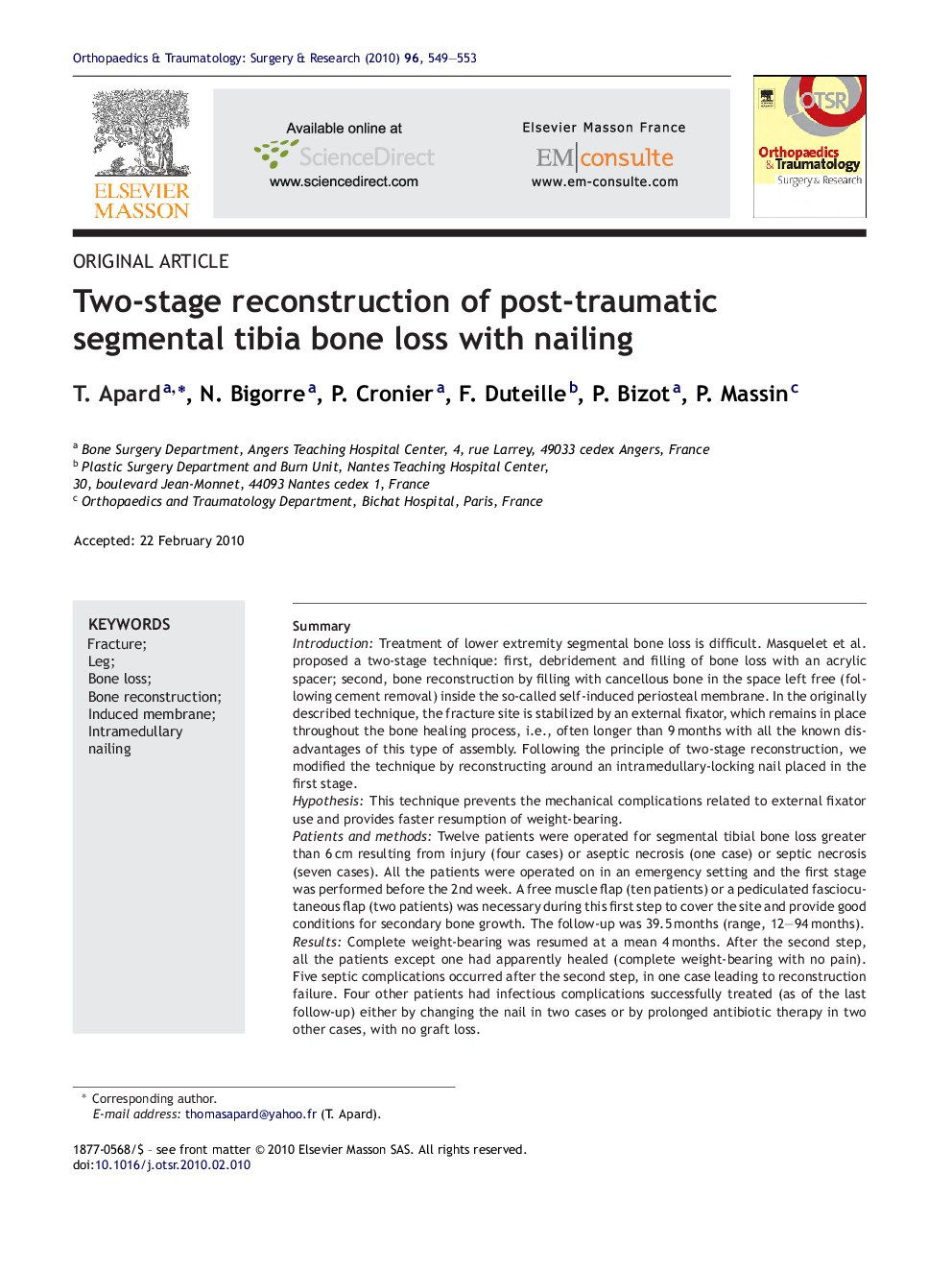| کد مقاله | کد نشریه | سال انتشار | مقاله انگلیسی | نسخه تمام متن |
|---|---|---|---|---|
| 4082194 | 1267627 | 2010 | 5 صفحه PDF | دانلود رایگان |

SummaryIntroductionTreatment of lower extremity segmental bone loss is difficult. Masquelet et al. proposed a two-stage technique: first, debridement and filling of bone loss with an acrylic spacer; second, bone reconstruction by filling with cancellous bone in the space left free (following cement removal) inside the so-called self-induced periosteal membrane. In the originally described technique, the fracture site is stabilized by an external fixator, which remains in place throughout the bone healing process, i.e., often longer than 9 months with all the known disadvantages of this type of assembly. Following the principle of two-stage reconstruction, we modified the technique by reconstructing around an intramedullary-locking nail placed in the first stage.HypothesisThis technique prevents the mechanical complications related to external fixator use and provides faster resumption of weight-bearing.Patients and methodsTwelve patients were operated for segmental tibial bone loss greater than 6 cm resulting from injury (four cases) or aseptic necrosis (one case) or septic necrosis (seven cases). All the patients were operated on in an emergency setting and the first stage was performed before the 2nd week. A free muscle flap (ten patients) or a pediculated fasciocutaneous flap (two patients) was necessary during this first step to cover the site and provide good conditions for secondary bone growth. The follow-up was 39.5 months (range, 12–94 months).ResultsComplete weight-bearing was resumed at a mean 4 months. After the second step, all the patients except one had apparently healed (complete weight-bearing with no pain). Five septic complications occurred after the second step, in one case leading to reconstruction failure. Four other patients had infectious complications successfully treated (as of the last follow-up) either by changing the nail in two cases or by prolonged antibiotic therapy in two other cases, with no graft loss.DiscussionThe use of the intramedullary nail facilitates the Masquelet technique by allowing the patient to resume weight-bearing more quickly and avoiding secondary fractures. However, the risk of sepsis remains high but can be controlled without compromising the final bone union in four cases out of five.Level of evidence: Level IV. Retrospective study.
Journal: Orthopaedics & Traumatology: Surgery & Research - Volume 96, Issue 5, September 2010, Pages 549–553